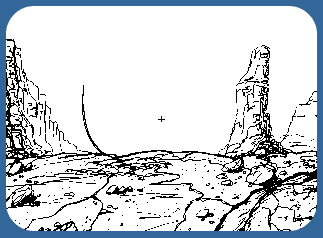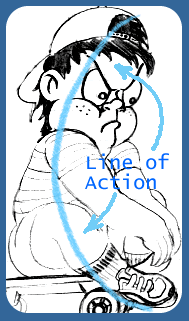

Nearly everything in nature moves in an arc-like fashion, whether it be a ball thrown into the air or to the way people walk or even turn their head. In the case of a person turning their head what you would see if a series of photographs were taken over time, that person's head would travel in an arc-like fashion.

Understanding the "wave theory principle" or Nature's "beauty curve" is essential to getting the correct movement to the way things move in space.
Since most things are made from joints, not all jointed parts move at the same speed. This to due to the fact that it takes time to transfer the force from one area to another. Observe the "pencil test animation" (i.e. a rough pencil animation) and see the way the tail-like curve is behaving. The bottom of the curve that is fixed to the ground, moves at a faster pace then the unbounded end. This delay in movement is called drag because the forces is being transmitted from the joints to the unbounded end.

When people walk or run, essentially what you would see if you took a series of photographs is the up and down "wave" motion. This motion is cause by the: contact, recoil, lift, and high positions of the legs hitting the surface.
The line of action is an imagery line that extends thru the main action of the figure. Since the line of action creates the overall sense of movement to the figure. A strong line of action will lead the audience's eyes where it will capture their attention. In planning out your animation accentuate this imaginary line by first drawing this imaginary line and then draw your figure on that line. The wave theory is related to the line of action because the imaginary line of action is in essence the wave.

|
|
|
|
|
|
|
|
|
|
|
|